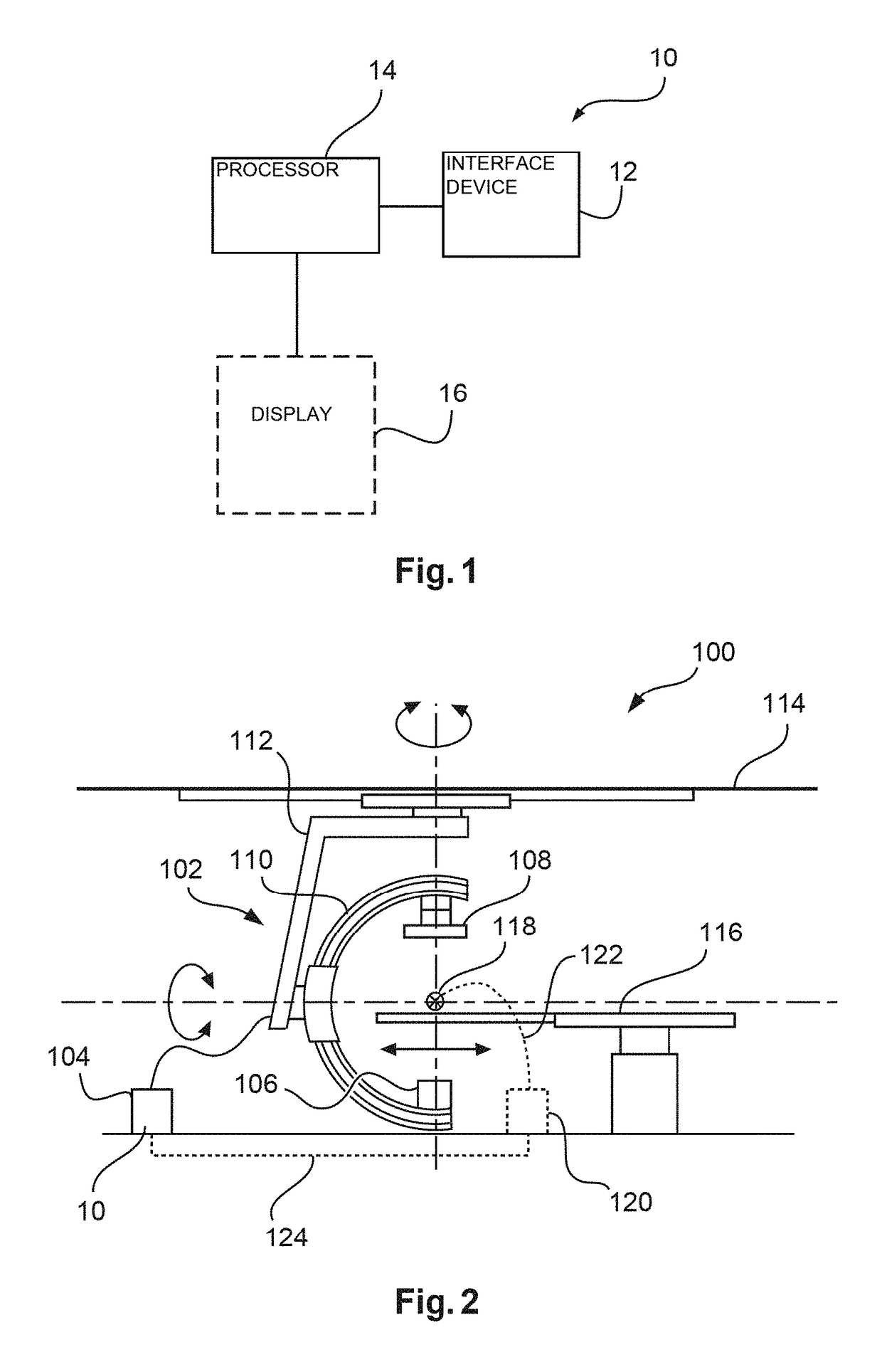Vessel segmentation
a technology of x-ray and segmentation, applied in the field of x-ray segmentation, can solve the problems of adding x-ray dose, and achieve the effect of reducing x-ray dose, improving and facilitating
- Summary
- Abstract
- Description
- Claims
- Application Information
AI Technical Summary
Benefits of technology
Problems solved by technology
Method used
Image
Examples
Embodiment Construction
[0042]FIG. 1 shows an X-ray image processing device 10, comprising an interface unit 12 and a data processing unit 14. The interface unit 12 is configured to provide a sequence of time series angiographic 2D images of a vascular structure obtained after a contrast agent injection. For example, the series of 2D images is provided by a (not shown) data base. In another example, the 2D images are provided by an X-ray imaging system (see also further below). The data processing unit 14 is configured to determine an arrival time index of a predetermined characteristic related to the contrast agent injection for each of a plurality of determined pixels along the time series. The data processing unit 14 is also configured to compute a connectivity index for each of the plurality of the determined pixels based on the arrival time index. The data processing unit is further configured to generate segmentation data of the vascular structure from the plurality of the determined pixels, wherein ...
PUM
 Login to View More
Login to View More Abstract
Description
Claims
Application Information
 Login to View More
Login to View More - R&D
- Intellectual Property
- Life Sciences
- Materials
- Tech Scout
- Unparalleled Data Quality
- Higher Quality Content
- 60% Fewer Hallucinations
Browse by: Latest US Patents, China's latest patents, Technical Efficacy Thesaurus, Application Domain, Technology Topic, Popular Technical Reports.
© 2025 PatSnap. All rights reserved.Legal|Privacy policy|Modern Slavery Act Transparency Statement|Sitemap|About US| Contact US: help@patsnap.com



